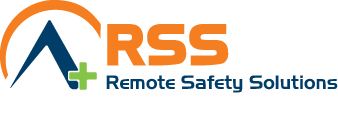Event Phone: 02 8005 1192
- HLTAID004 Jan
28 January, 2019
8:30 am - 5:30 pm
Your Trainer For This Program
-
Keith McReynolds

Keith is the founding Director of Remote Safety Solutions and has a diverse background, with an adventure background derived from working as a guide in Australia and overseas he has dealt with a range of remote incidents within his own adventures. Keith's emergency management and first aid skills are derived from working as Ski Patroller and Rescue Air Crewman for a number of rescue and emergency services. When Keiths not in the office he's on the road traveling with his team to some of Australias most remote and isolated communities delivering a range of courses to better prepare people for any unforeseen incidents they may encounter.
HLTAID004 Provide an emergency first aid response in an education and care setting
STUDENT INFORMATION
Award issued
- HLTAID004 Provide an emergency first aid response in an education and care setting
- HLTAID003 Provide first aid
- HLTAID002 Provide basic emergency life support
- HLTAID001 Provide cardiopulmonary resuscitation
It is recommended this unit be renewed every 36 months in line with industry standards. Locate the most current training package at training.gov.au
Are there physical requirements for this course?
It is important to note that there are physical standards which relate to the level of performance required when undertaking accredited training. The HLTAID competency standards require a level of physical ability to provide resuscitation and respond to an emergency situation where there may be risk to life. One requirement of the training package is that you are to be assessed as physically capable of performing uninterrupted CPR for at least 2 minutes on an adult/child resuscitation manikin placed on the floor. There can be no exceptions to these Australian Government requirements that are clearly written into the Training Package. Therefore, students who are unable to satisfy the physical requirements of the course cannot be deemed competent or issued with a statement of attainment, even if the qualification is a necessary part of their employment conditions.
Resources that will be available for this course
- AED training device
- Different types of training adrenalin autoinjector training deceives (e.g. EpiPen®)
- Placebo bronchodilators and a spacer devices
- Workplace first aid kit and injury, trauma/illness records
Pre-course study
If there is pre-course study for the course, it is found in the student portal. Students must have access to a computer, phone, tablet etc. with access to the internet to complete the pre-course study online.
What does competency-based training actually mean?
A competency-based training environment is centered on demonstrated competence against industry-defined standards of performance. Competency-based training is the concept that individuals learn at different rates as well as through different modes and different environments and that the skills and knowledge that a student has acquired previously are able to be formally recognised.
Amount of training and the AQF volume of learning
The AQF Volume of Learning describes how long a student, who does not hold any competencies identified in the qualification, would normally take to develop all of the required skills and knowledge at that qualification level.
The amount of training comprises the formal learning activities that are provided to a student to enable them to meet the requirements of each training product and gain the skills and knowledge specified in the relevant training product.

Exceptions for duration of the course
Course durations are reflective of group sizes of between 4 and 15 students. If there are less students in a group, you may find course duration reduced by a maximum of 10%. If a class size exceeds 15 students, it may therefore also be necessary to increase course duration depending on the number of students.
Unique Student Identifier (USI)
Completing any vocational education course in Australia, it is a requirement for you to obtain and supply a USI. This is obtainable from usi.gov.au If a USI is not supplied and verified with usi.gov.au a certificate cannot be issued to you.
If you are under 18 years of age
It is a requirement that parental/guardian consent is obtained for students under the age of 18 to be able to participate in a course. The form for this can be found here.
ASSESSMENT – THEORY – Multi choice question paper
You will be assessed on:
State/Territory regulations, first aid codes of practice and workplace procedures:
ARC guidelines for provision of CPR and first aid to infants, children and adults
Guidelines from Australian national peak clinical bodies
Safe work practices to minimise the risk and potential hazards
First aid requirements for services under the Education and Care Services National Law
Infection control principles and procedures, including use of standard precautions
Requirements for currency of skill and knowledge
Legal, workplace and community considerations, including:
Awareness of potential need for stress-management techniques and available support following and emergency situation, including the psychological impact on children
Duty of care requirements
Respectful behavior towards a casualty
Own skills and limitations
Consent, including situations in which parental/caregiver consent is required
Privacy and confidentiality requirements
Importance of debriefing
Considerations when providing first aid including:
Airway obstruction due to body position
Appropriate duration and cessation of CPR
Appropriate use of an AED, including placement of pads for adults and children aged older than 8 years old
Specific considerations when using an AED on children aged between 1 and 8 years, including identification of AED with pediatric capability, pediatric voltage and use of pediatric pads
Chain of survival
Standard precautions
How to conduct a visual and verbal assessment of the casualty
Principles and procedures for application of first aid management of the following scenarios:
Abdominal injuriesAllergic reactions
Anaphylaxis, including signs, symptoms and triggers and using different types of adrenaline auto injectors
Asthma, including signs, symptoms and triggers and using different types of bronchodilators
Basic care of a wound
Bleeding control
Burns
Cardiac conditions, including chest pains
Choking and airway obstructions
Crush injuries
Diabetes
Dislocations
Drowning
Envenomation
Environment impact, including hypothermia, hyperthermia, dehydration and heat stroke
Eye and ear injuries
Febrile convulsions
Fractures
Head, neck and spinal injuries
Minor skin injuries
Needle stick injuries
Poisoning and toxic substances
Respiratory distress
Seizures, including epilepsy
Shock
Soft tissue injuries, including sprains and strains
Stroke
Unconsciousness
Basic anatomy and physiology relating to:
How to recognise a person is not breathing normally
Chest
Infant respiratory systems and implications for provision of CPR
Basic anatomical differences between adults and children, and the implications for provision of first aid
Normal clinical values for children
Response/consciousness
Upper airway and effect of positional change
ASSESSMENT – PRACTICAL
Physical demonstrations (skills)
The simulated assessment environments will reflect the real-life working environment where these skills and knowledge would be performed, with all the relevant equipment and resources of that working environment. Skills must be demonstrated by the student working individually in an environment that provides realistic in-depth, industry-validated scenarios and simulations to assess students’ skills and knowledge.
It’s important that students have knowledge of the content of this course. The assessable practical skills are listed below.
You will be assessed on performing first aid scenario and task demonstrations for:
1. Infant CPR
2. Adult/child CPR & defibrillation
3. Anaphylaxis & autoinjector
4. Asthma & medication
5. Written incident report
6. Choking
7. Head injury
8. Turning a casualty on his/her side
9. Bleeding control & shock
10. PIT for snake/spider bite
11. Rice for sprain
12. Bandage & sling for fracture
13. Seizure
14. Poisoning
15. Verbal reporting, debriefing and evaluating
Student written agreement
If you are completing this course, please download the student agreement to ensure that you are aware of your rights and obligations. You can access the student written agreement by clicking here.
Course requirements
There are no prerequisite, entry, work-placement, licensing or certification requirements for this course.
Venue: Northern Beaches Sydney, Brookvale, NSW
Venue Phone: 02 8957 5428
Venue Website: www.remotesafety.com.au
Address:
Description:
Remote Safety Solutions HQ
First Aid Training in Sydney, Northern Beaches N SW
Courses run from this venue,
- HLTAID003 provide first aid
- HLTAID002 provide basic emergency life support
- HLTAID001 CPR
- PUAWER008B Confine small workplace emergencies (Fire Extinguisher use)
- 10340NAT Course in Safe Handling of Sharps and Infectious Waste
